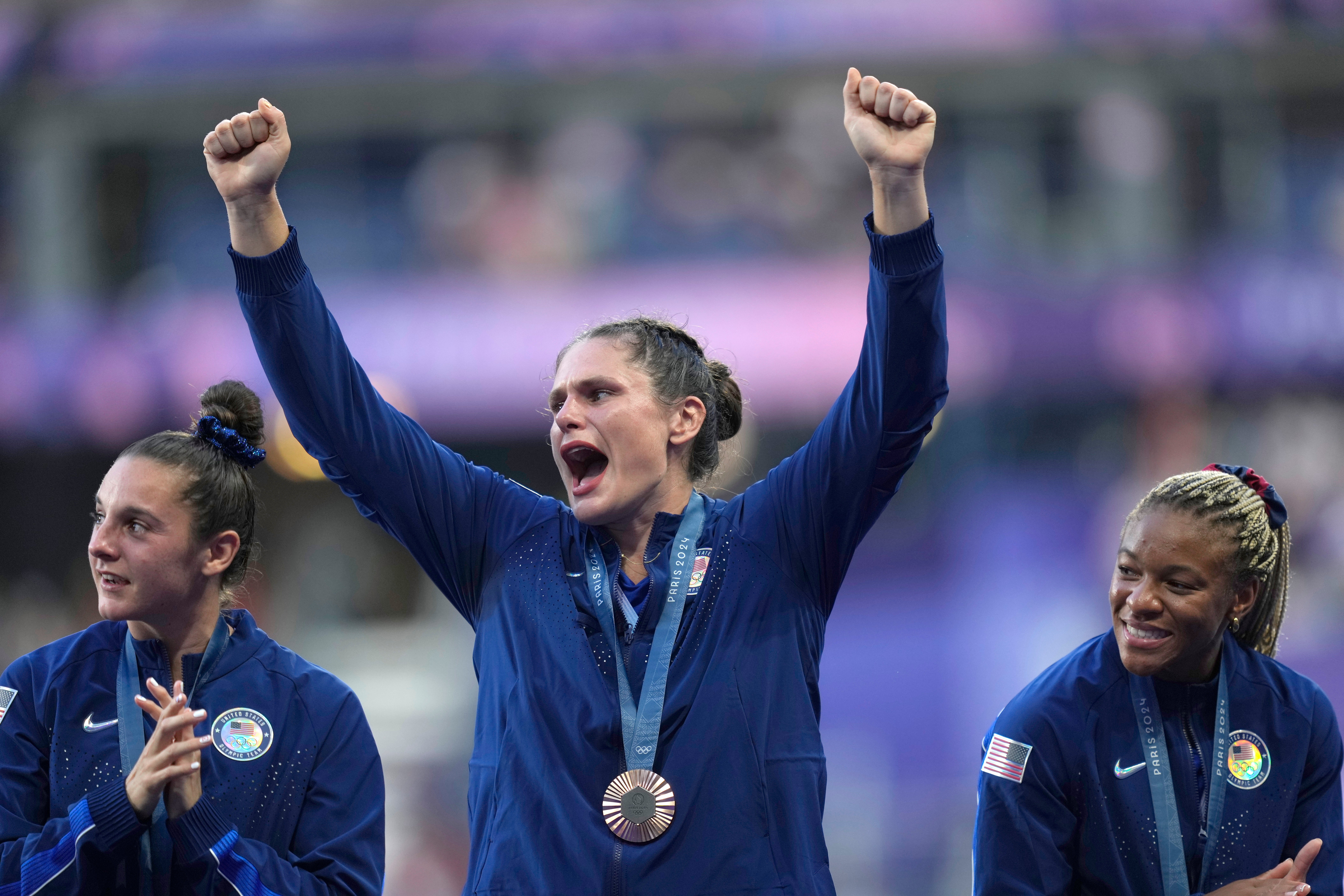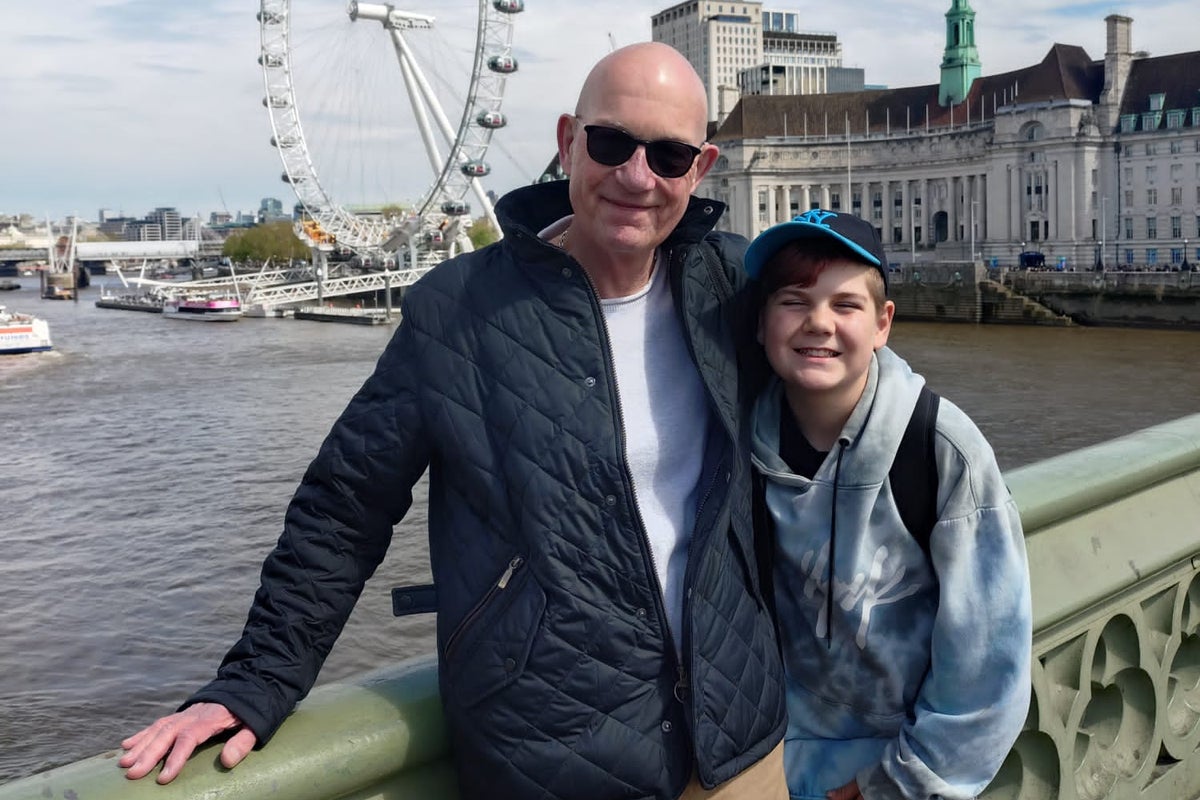Beast, beauty, brains. They are the three words hashtagged in the Instagram bio of Ilona Maher, the tagline around which she has built her brand. And what a brand it is. It is no overstatement to say that she is now the world’s best known rugby player – even if a large portion of her 5.2m followers may never have watched the sport in which she plies her primary trade.
The last 12 months have seen the 29-year-old from the sleepy city of Burlington in Vermont catapulted to superstardom. Already a TikTok darling, Maher’s behind-the-scenes insights and personality at Paris 2024 exploded; an appearance on Dancing with the Stars and on the cover of Sports Illustrated saw her profile grow again. Maher has already batted away offers from WWE and is eyeing a move into Hollywood. In the United States, Maher has entered an upper echelon of sporting superstars, as confirmed at the ESPY Awards last month when she was named Best Breakthrough Athlete of the year, following in the footsteps of Tom Brady and LeBron James. One of rugby’s greatest selling points has always been that nobody is bigger than the game; Maher just might be.
But, as she will remind you, she is also just a rugby player. Maher never really intended to be a social media superstar. Her postings were, and remain, a side hustle; a mechanism through which she can reap rewards not on offer within her sport. For nearly a decade, she, like most players at the Women’s World Cup, has toiled for limited pay in front of limited crowds or lived the tough life of international travel on the sevens circuit, not knowing what the future might hold in a fluctuating format. If women’s rugby had boomed before her career began, there is a chance that Maher might not have been as widely known at all.

“So many times people forget, but I am a rugby player first,” Maher told the BBC this week. “I do the social media because I have to because it is not sustainable to be a women’s rugby player – I am not going to make money doing it.
“It does irk me at times when people forget that. One comment once was: ‘Are you going to watch the Instagrammer play?’ I was like, ‘no, I have won a bronze medal, I’ve been to two Olympics, I am a good rugby player who loves the sport’. I am proud to do both but I do want to be known as a rugby player.”
They are the words of an athlete who has remained grounded within their sport despite the opportunities that lie elsewhere. After signing a short-term deal at Bristol Bears during the last Premiership Women’s Rugby (PWR) season, there was understandably a degree of doubt about how Maher would slot in – it had been some time since she had played the 15-a-side game, and she was joining a squad with plenty of established starters. But there was no sense of entitlement – players and coaches were impressed at how Maher, desperate to make this World Cup, bought in both culturally and on the pitch. She has inspired some of her teammates, too; England prop Sarah Bern is one of those who has notably worked hard to build her online presence and showcase her feats on and off the field this year.

“She was great when she came to Bristol,” England lock Abbie Ward recalls of her former teammate. “She brought loads of energy. She has a lot of experience in the sevens and she’ll take that into the 15s.
“She’s a genuinely great person. She taught the Bristol Bears a lot about how she interacted with the fan base. She has a huge online presence but she has earned it and it’s all very genuine.”
Her wider impact on the league was significant, too. There was a degree of consternation and questioning from other PWR sides over the decision by the competition and England’s Rugby Football Union (RFU) to ensure a visa was granted to allow Maher to play in the competition, but in terms of building its profile, her arrival was important. Bristol’s ticket sales and social media reach boomed, with a 3,000% growth on TikTok; PWR have managed to attract more and more brands and broadcast partners to hopefully ensure its ongoing viability.

The Ilona Maher effect has been significant in the United States, too – good news for World Rugby at a time where the governing body are desperate to make their American dream work with both the men’s and women’s World Cups hosted there in the next eight years. A record crowd of 10,518 watched the USA’s women take on Canada in Missouri in May; 15,000 or more saw the hosts edge out Fiji in Washington DC in the first half of a double-header also featuring England’s men.
When collecting her ESPY award, Maher used her acceptance speech to promote the World Cup, an important marketing moment for a sport always striving for cut-through. At the opening press conference for this World Cup, only two players were mentioned by name: Ellie Kildunne – reigning World Player of the Year and face of England’s home tournament – and Maher.
The truth is that Maher is still a work-in-progress as a 15s player, though the physical potential that her pace, power and five-foot-eleven frame offer make her an exciting prospect. She slots into the centres for the USA’s opener alongside fellow Olympic medallist Alev Kelter, whose creativity and skill will help a side bidding to spring a shock and break into the semi-finals. Captain Kate Zackary is as strong a leader and irrepressible a flanker as any at this tournament; prop Hope Rogers blends frightening power with the scrum-time nous amassed over 12 years in the loosehead shirt.
Yet plenty of attention will fall on one individual. “I think we can be a world-class team,” Maher said on Wednesday. “We talk a lot about game-changers and I think we are a team that is changing the game on and off the field a lot. This is a time where women’s rugby is in a state where it could grow massively and I do believe this team is at the forefront with how we present ourselves and people’s perception of us. We want more people to have eyes on the game.” The Maher movement has only just begun.





